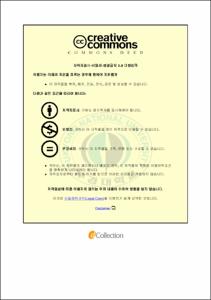자율관리어업의 효율성분석
- Alternative Title
- A Study on the Efficiency of autonomous management fisheries
- Abstract
- 본 연구는 DEA 모형을 이용하여 어선어업 유형의 2007년 자율관리어업 참여공동체 10개소와 미참여공동체 10개소의 상대적 효율성을 분석하였다. 20개의 DMU를 평가한 결과, 전체 기술적 효율성(CRS)은 0.1169, 순수 기술적 효율성(VRS)은 0.3249, 규모의 효율성(SE)은 0.1169로 분석되었다. 순수 기술적 효율성(VRS)보다 규모의 효율성(SE)이 0.2080 낮게 나타나 자율관리어업에 있어 전체 기술적 효율성에 비효율성이 존재하는 원인은 투입물과 산출물에 따른 기술적인 비효율성 문제보다 규모에 따른 비효율성이 원인이 되는 것을 알 수 있다.
분석에 이용된 DMU를 자율관리어업 참여 여부에 따라 두 가지로 분류하여 살펴보면, 자율관리어업 참여공동체가 CRS, VRS, SE 모두 미참여공동체보다 높은 것을 알 수 있다. 이것은 자율관리어업 참여공동체의 효율성이 참여하지 않은 공동체보다 상대적으로 효율적인 것을 의미한다.
20개의 DMU 중에서 상대적 효율성이 가장 높은 DMU는 DMU4이며 CRS, VRS, SE 값이 모두 1이다. 하지만 이 DMU는 20개의 DMU 중에서 상대적으로 가장 효율적인 것을 의미하는 것이지 절대적인 효율성을 의미하는 것은 아니다.
자율관리어업에 참여한 공동체가 참여하지 않은 공동체보다 효율성이 높으므로, 자율관리어업의 도입이 어민의 소득보전에 양(+)의 효과를 가지고 온다는 것을 알 수 있다. 따라서 향후 자율관리어업에의 참여를 적극 권장하여야 할 것으로 판단된다.
Recently Korean fisheries industry has been facing many difficultes due to the severe depletion of various kinds of fisheries resources. Under the current circumstances, international fisheries organizations and coastal states have set up and implemented a series of fishery policies for the purpose of the sustaintable use of fisheries. Due to the international approach trend for fisheries managment and the limitation of the previous government-driven policies, Korean government has also adopted and implemented Autonomous Management Fisheries System since 2001.
The primary purpose of this study is to analyze the efficiency on the Autonomous Managment Fisheries System by using the DEA(Data Envelopment Anaysis) Model and draw the some of implications on this System. For the purpose of this study, it has been applied to the DEA technique as well as the theorical backgrounds, and then the positive analysis has been conducted.
First of all, this study provides the definition, the domestic present status through many kinds of research papers on the Autonomous Managment Fisheries System, and then the main results for the previously conducted papers by using the DEA Model have been summarized. Second, this study divided two different groups; (A) Fisheries Community participating in the Autonomous Managment Fisheries System and (B) Fisheries Community not participating in the System, and then it shows the main results between the different two groups applying to the DEA technique.
This study includes Fisheries Community A and B consisting of ten units each group involved in fisheries based on fishing vessel. In the case of Fisheries Community A, those units are participating in this System over at least five years.
As the results of DMU(Decision Making Unit) analysis for the selected 20 units, generally speaking it shows that CRS(Constant Returns to Scale) is 0.1169, VRS(Variable Returns to Scale) is 0.3249, and SE(Scale Efficiency) is 0.1169. What we should pay attention to this result is that the level of SE figure is lower than the level of VRS figures.
It also shows that the level of CRS, VRS and SE in Fisheries Community A are higher than in Fisheries Community B after examining the results for the two different groups depending on the participation in the System or not.
Taking into account this results, it can be concluded that the adoption and implementation of the Autonomous Managment Fisheries System into some Fisheries Community has a significant positive effect on the increase of productivity as well as the level of income for fishermen.
- Issued Date
- 2009
- Awarded Date
- 2009. 8
- Type
- Dissertation
- Publisher
- 부경대학교 대학원
- Alternative Author(s)
- Nho, Seung Guk
- Affiliation
- 부경대학교 대학원
- Department
- 대학원 자원경제학과
- Advisor
- 유동운
- Table Of Contents
- 제1장 서론 = 1
1. 연구배경 및 목적 = 1
2. 연구내용 및 방법 = 2
제2장 한국의 자율관리어업 = 4
1. 자율관리어업의 개념 및 발달배경 = 4
2. 국내 추진과정 및 추진체계 = 8
3. 국내 추진 현황 = 14
제3장 자료포락분석(DEA)의 이론적 검토 = 18
1. 효율성의 정의와 측정방법 = 18
2. DEA 분석모형의 특징 = 24
3. DEA 기법을 이용한 선행연구 = 35
제4장 DEA를 이용한 실증분석 = 38
1. 분석대상 및 변수의 선정 = 38
2. 분석결과 = 41
제5장 요약 및 결론 = 50
1. 요약 및 시사점 = 50
2. 연구의 한계점 및 연구방향 = 51
- Degree
- Master
- Files in This Item:
-
-
Download
 자율관리어업의 효율성분석.pdf
기타 데이터 / 1.02 MB / Adobe PDF
자율관리어업의 효율성분석.pdf
기타 데이터 / 1.02 MB / Adobe PDF
-
Items in Repository are protected by copyright, with all rights reserved, unless otherwise indicated.